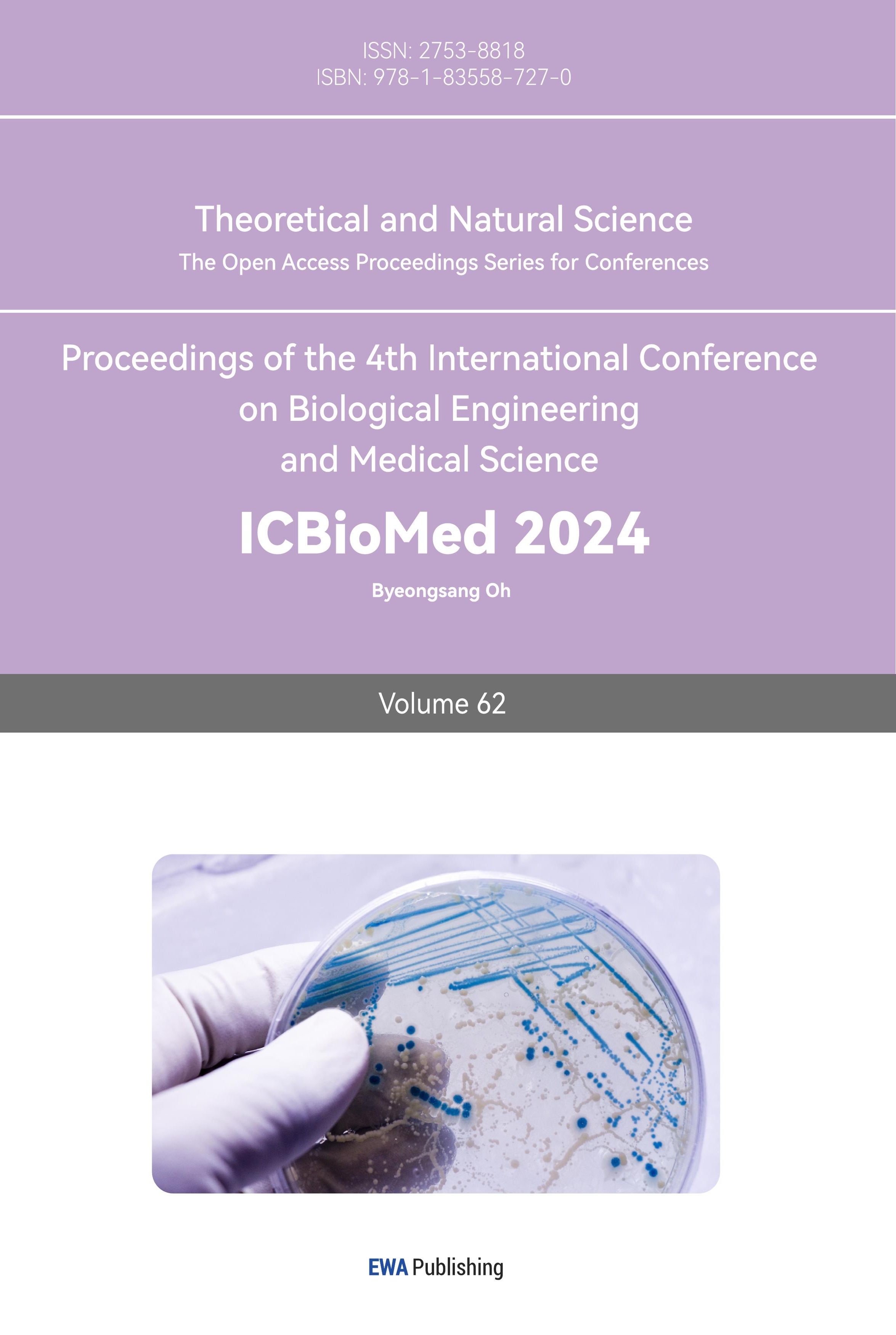1. Introduction
Neurotransmitters act as mediators of information transmission in the nervous system, and the normal functioning of the nervous system is directly associated with the functional state of the brain. In psychiatric disorders, neurotransmitter imbalance is widely recognized as one of the important pathological mechanisms [1]. Therefore, the development of drugs targeting neurotransmitters and their receptors has become an important means of treating psychiatric disorders. However, the specific mechanisms of neurotransmitters and their receptors in the action of psychotropic drugs are not yet fully understood, which limits the further enhancement of drug efficacy. Therefore, in-depth investigation of the mechanisms of neurotransmitters and their receptors in the action of psychotropic drugs is of great theoretical and practical significance for understanding drug efficacy, optimizing therapeutic regimens, and developing novel psychotropic drugs.
In recent years, many research results have been achieved in the analysis of the role of neurotransmitters and their receptors in psychotropic drugs, which has advanced the development in this field. Researchers have explored the mechanisms by which different neurotransmitters act in psychiatric disorders, including 5-hydroxytryptamine (5-HT), dopamine (DA), norepinephrine (NE), and others. A variety of psychotropic drugs have been developed to target these neurotransmitters and their receptors. For example, 5-HT receptors have been associated with psychiatric disorders such as anxiety and depression, which have become the focus of research in recent years [2]. Some studies have shown that by activating 5-HT1A receptors, the mood state of patients can be improved and symptoms such as anxiety or depression can be reduced. In addition, the role of DA receptors in psychiatric disorders such as schizophrenia (SCH) has been more clearly defined. Drugs targeting these receptors have been developed and are working in the treatment of psychiatric disorders. Researchers have relied on technologies such as gene editing and high-throughput sequencing to gain a deeper understanding of the regulatory mechanisms of neurotransmitters and their receptors in diseases, which has facilitated drug development to a greater extent [3]. In the future, with the updating of research technology and the maturation of research methods, it is believed that more novel drugs targeting neurotransmitters and their receptors will be developed, providing more options for the treatment of psychiatric diseases.
In the field of psychotropic drugs, drugs targeting neurotransmitters and their receptors show diverse characteristics. For example, dopamine agonists have performed well in the treatment of Parkinson's disease; 5-HT receptor modulators have been effective in antidepressant and anxiolytic therapy. However, these drugs are not always therapeutically effective HO safe. There are a large proportion of drugs with unstable efficacy and significant long-term side effects, such as extrapyramidal reactions that may be triggered by antipsychotics [4]. In addition, drug reactions vary due to individual differences, so it poses a challenge for treatment. Therefore, how to balance the efficacy and side effects to achieve personalized treatment is the focus of current research.
The aim of this study is to explore in depth the mechanism of action of psychiatric disorders and their related psychotropic drugs, so as to provide a theoretical basis for the clinical treatment of psychiatric disorders.
2. Neurotransmitters and their associated mechanisms of action
2.1. 5-HT
5-HT (Figure 1) is primarily derived from tryptophan (TRP), an essential amino acid that needs to be consumed from food. Tryptophan enters the central nervous system through the bloodstream and subsequently enters neuronal cells. Tryptophan in plasma comes in both free and bound forms. The free form of TRP is more likely to enter the brain through the blood-brain barrier.
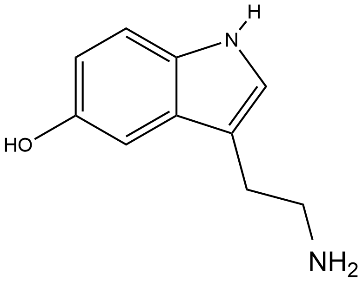
Figure 1. Structural formula of pentraxin (5-HT)
2.1.1. Production of 5-HT
In the cytoplasm of neuronal cells, tryptophan is first catalyzed by tyrosine hydroxylase (TPH), which undergoes a decarboxylation reaction and is converted to 5-hydroxytryptophan (5-HTP) [5]. Then, 5-HTP is catalyzed by tryptophan decarboxylase and undergoes a hydroxylation reaction, ultimately producing 5-HT [5].5-HT is widely distributed in the gastrointestinal tract, spleen, platelets, and central nervous system.
Seven 5-HT receptor subtypes have been identified, each with multiple subtypes. Its receptor regulates neuronal excitability by binding to 5-HT and triggering intracellular signaling.
2.1.2. Metabolism of 5-HT
5-HT is metabolized primarily by the liver to 5-hydroxyindoleacetic acid (5-HIAA). The metabolic process involves first oxidation to the corresponding aldehyde by monoamine oxidase and then to 5-hydroxyindoleacetic acid (5-HIAA), an indoleacetic acid derivative, by aldehyde dehydrogenase [6]. The latter is subsequently excreted from the body by the kidneys.
2.1.3. Link between abnormal 5-HT levels and psychiatric disorders
When the 5-HT content is too high, it may trigger the overactivity of the sympathetic nervous system, which will trigger a number of symptoms, including dizziness, headache, insomnia and anxiety. These symptoms can seriously interfere with the patient's daily life. Studies have shown that in certain patients suffering from anxiety or depression, their cerebrospinal fluid levels of 5-HT are significantly higher than those of the healthy population, which may indicate that too much 5-HT is associated with anxiety symptoms [7]. Conversely, low levels of 5-HT may lead to a range of low mood and impaired cognitive functioning. Such patients tend to exhibit symptoms such as depression, poor concentration, and memory loss. Depressed patients are a prime example of those who tend to have lower than normal levels of 5-HT. Antidepressant representative drugs selective 5-HT reuptake inhibitors (SSRIs) exert their therapeutic effect precisely by increasing the concentration of 5-HT in the synaptic gap.
2.2. Norepinephrine
A catecholamine neurotransmitter, norepinephrine is mainly distributed in the brainstem, neurons are widely connected with other regions of the brain, and has a wide range of regulatory effects on the functioning of the nervous system, and its chemical structural formula is shown in Fig. 2, this paper focuses on its production and metabolic pathways and the intrinsic mechanism of the occurrence of psychiatric disorders associated with norepinephrine.
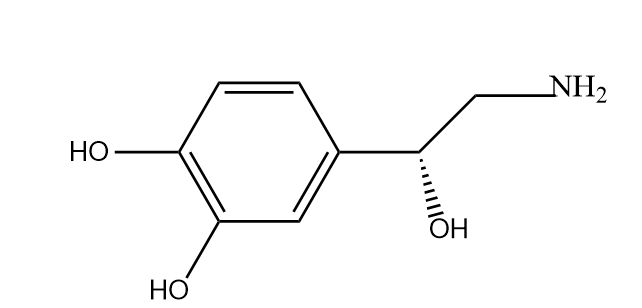
Figure 2. Structural formula of norepinephrine
2.2.1. Production and Release of Norepinephrine
Norepinephrine is a substance formed after the removal of N-methyl from adrenaline, which also belongs to catecholamines in its chemical structure, and is synthesized and secreted by post-sympathetic ganglion neurons and adrenergic nerve endings in the brain. It is also a hormone, synthesized and secreted by the adrenal medulla, but in smaller amounts. Norepinephrine in the circulating blood comes mainly from the adrenal medulla. Norepinephrine is an α-receptor agonist, but it can also agonize β-receptors. Norepinephrine agonizing α-receptors can cause extreme vasoconstriction, which increases blood pressure and coronary artery blood flow, and agonizing β-receptors can intensify myocardial contraction.
The receptors are divided into α-receptors and β-receptors. α-receptors are divided into α1 and α2 subtypes, which play a role in regulating vasoconstriction and negative feedback regulation, respectively. β-receptors are divided into β1, β2 and β3 subtypes, which lead to the physiological processes of myocardial contraction, bronchiolar diastole, vasodilation and lipolysis, etc. The β-receptors are divided into β1, β2 and β3 subtypes.
2.2.2. The link between abnormal norepinephrine levels and mental disorders
When there is an excess of norepinephrine in the body, it will lead to the sympathetic nerves being in a state of excitation, which will cause the cardiac muscle contraction to increase and the heart rate to accelerate, and also lead to vasoconstriction, which will cause the blood pressure to rise, which will lead to symptoms such as dizziness, headache, nausea, vomiting and so on, and in the long term, it will lead to the symptom of anxiety, which is a series of symptoms called sympathetic nerve excitation.
When there is too much norepinephrine, it can lead to skeletal muscle excitation, which is mainly manifested in symptoms such as skeletal muscle relaxation and tremor, which can lead to Parkinson's disease, and this series of symptoms is known as skeletal muscle excitation. It has been shown that patients with anxiety disorders and Parkinson's disease have higher levels of norepinephrine in their bodies. Too little norepinephrine may lead to abnormal neurotransmission, causing headaches, dizziness, and other uncomfortable symptoms, a set of symptoms known as central nervous system dysfunction.
Norepinephrine is involved in the process of learning and memory, and low levels can affect information processing ability, leading to problems such as lack of concentration and slowed thinking, and in the long term, memory loss may occur, a set of symptoms known as cognitive decline. Norepinephrine is associated with emotion regulation. Low levels can interfere with emotional expression and recognition, leading to symptoms such as persistent low mood or excessive worry, which can lead to depression, a set of symptoms known as mood regulation disorders.
Norepinephrine is associated with the waking state, and low levels can cause increased alertness and interfere with sleep quality. Leads to sleep disorders such as difficulty falling asleep and waking up with excessive dreams It has been shown that norepinephrine levels are usually lower in patients with attention deficit and hyperactivity disorder and depression.
2.3. Dopamine (DA).
Dopamine (Figure 3) is a neurotransmitter that plays a key regulatory role in the central nervous system. Dopamine is released by neurons that send signals to other nerve cells and is used to help the cells transmit impulse signals. It is produced primarily by the substantia nigra in the midbrain and the locus coeruleus in the brainstem, and exerts its effects by binding to and activating cell surface receptors
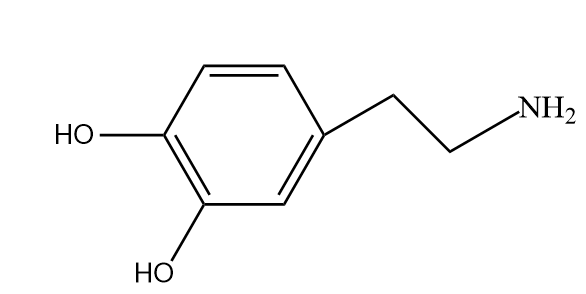
Figure 3. Structural formula of dopamine
2.3.1. Production of DA
Dopamine is produced from either phenylalanine or tyrosine. Of these, tyrosine is converted to L-dopa (L-DOPA) through the catalysis of tyrosine hydroxylase (TH). In the presence of aromatic acid decarboxylase (AADC) L-dopa is decarboxylated to finally produce dopamine.
2.3.2. Metabolism of DA
Dopamine released into the synaptic gap is progressively metabolized by enzymes such as monoamine oxidase (MAO), catechol-O-methyltransferase, and aldehyde dehydrogenase, ultimately resulting in the production of biologically inactive homovanillic acid. HVA is filtered out of the bloodstream through the kidneys and then excreted in the urine.
2.3.3. Relationship between abnormal DA levels and psychiatric disorders
Excessive dopamine content may be associated with psychiatric disorders such as schizophrenia and depression. In schizophrenia, overproduction of dopamine and hyperfunction of dopamine in the midbrain-limbic pathway lead to psychotic symptoms such as delusional disorder of victimization.
Low dopamine levels may be closely associated with disorders such as Parkinson's disease and attention deficit hyperactivity syndrome. In Parkinson's disease, abnormal metabolic production of dopamine leads to movement disorders such as tremor paralysis and muscle tonus.
3. Neurotransmitters and their psychotropic drugs
3.1. 5-HT representative drug: fluoxetine (C17H19ClF3NO)
Fluoxetine (Figure 4) is a clinically widely used selective serotonin reuptake inhibitor (SSRI), mainly used for the treatment of various depressive psychiatric disorders.
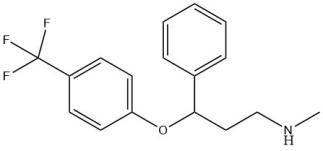
Figure 4. Structural formula of fluoxetine
3.1.1. Mechanism of action
Fluoxetine is able to prevent 5-HT from being released from the presynaptic membrane and then being reabsorbed back into the presynaptic neuron by transporters on the presynaptic membrane. As the 5-HT transporter is inhibited, 5-HT cannot be transported away, and the concentration of 5-HT in the synaptic gap can be increased, which prolongs and enhances the binding time and action effect of 5-HT and 5-HT receptors on the postsynaptic membrane. This mechanism of action helps to improve the symptoms of depression, obsessive-compulsive disorder and other disorders because 5-HT plays an important role in regulating mood, cognition and behavior.
3.1.2. Current status of application
Fluoxetine is mainly used to treat depression, which can significantly improve patients' depressive symptoms, such as depressed mood, loss of interest, and sleep disorders [7]. Fluoxetine is also used in the treatment of obsessive-compulsive disorder, which can reduce patients' obsessive thinking and compulsive behavior.
3.1.3. Side effects of fluoxetine
The effects on the gastrointestinal tract are mainly manifested as nausea, vomiting, diarrhea and anorexia, and other uncomfortable symptoms, which may affect the patient's appetite and nutrient absorption [8]. Meanwhile, fluoxetine may also have side effects on the nervous system, including headache, insomnia, dizziness and drowsiness, etc., and some patients may even experience anxiety and nervousness, which may further affect their daily life [8]. In addition, some patients may have an allergic reaction to fluoxetine, which is manifested by symptoms such as skin itching and rash.
3.2. Norepinephrine Representative Drug: Venlafaxine (C15H14O3)
3.2.1. Mechanism of action
Serotonin-norepinephrine reuptake inhibitor can inhibit the reuptake of norepinephrine in the presynaptic membrane of neurons by blocking the norepinephrine transporter, thus increasing the concentration of norepinephrine in the synaptic space. Its representative drug is Venlafaxine, whose chemical structure formula is shown in Figure 5. The drug acts on adrenergic α and β receptors, producing strong rapid and transient excitatory α and β-type effects, and the excitation of the receptors can lead to enhanced myocardial contraction, accelerated heart rate, and increased myocardial oxygen consumption, thus achieving the purpose of treating or alleviating anxiety and mania.
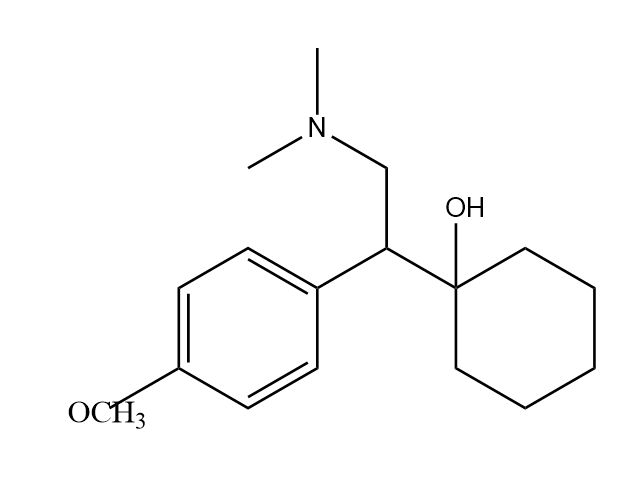
Figure 5. Structural formula of venlafaxine
3.2.2. Application status
Venlafaxine is one of the main antidepressant drugs in the clinic, belonging to the 5-HT and norepinephrine dual inhibitors, not only can resist the symptoms of depression, but also the drug effect is good, able to maintain the stability of the blood concentration value, long-lasting, and the drug has a rapid onset of action, few side effects, good tolerance and so on [9]; in the treatment of Parkinson's disease combined with depression in the process of the efficacy of the determined and not found obvious side effects, it is worth the clinical promotion. It is worthy of clinical promotion.
Venlafaxine is a new type of antidepressant, not only can resist the symptoms of depression, but also the drug effect is good, can maintain the blood concentration value is stable, long-lasting, and the drug has a rapid onset of action, few side effects, good tolerance and other characteristics; in the treatment of Parkinson's disease combined with depression, the efficacy of the treatment is determined, and is worthy of clinical promotion [10].
The existing problem is that there are certain side effects, and the possible adverse reactions include drowsiness, weight gain, dry mouth, nausea and so on.
3.3. Dopamine representative drug: risperidone (C23H27FN4O2)
3.3.1. Mechanism of action
The representative drug is risperidone, whose chemical structure formula is shown in Figure 6. It is a histamine H1 receptor antagonist, which binds to the functional receptors of dopamine with an antagonistic effect, thus blocking the action of dopamine and reducing the symptoms caused by the over-activation of dopamine signaling molecules; it reduces the positive symptoms of schizophrenia through the antagonism of the D2 receptor, and at the same time, risperidone is also capable of blocking the 5-HT receptor and alleviating the mood swings caused by the over-activation of 5-HT. excess.
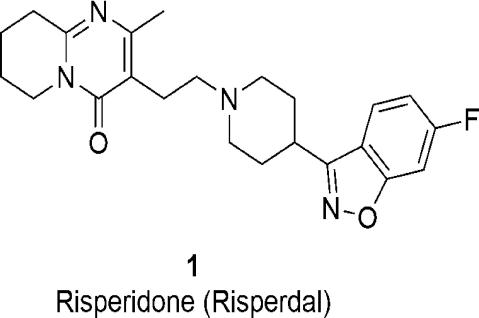
Figure 6. Structural formula of risperidone
3.3.2. Current state of application
It is currently used to treat acute and chronic schizophrenia, bipolar I disorder (monotherapy or adjunctive therapy), and irritability associated with autism [11]. It is also used to treat psychiatric disorders such as affective disintegrative disorder and depression [12].
For those who are pregnant risperidone is classified as a class C drug and can only be used when it has no effect on the fetus. The active portion is excreted through breast milk; therefore, women taking the drug cannot breastfeed; risperidone has not been systematically studied for addiction or abuse.
Risperidone use may cause side effects, with usual symptoms being drowsiness, increased appetite, abdominal pain, anxiety, nausea, dizziness, tremor, and rash; common adverse effects after discontinuation of the drug are drowsiness, nausea, abdominal pain, dizziness, and vomiting [11].
4. Analysis of the value of the efficacy of central neurotransmitters 5-HT, DA and NE in patients with depressive disorders
In recent years, the number of patients with first-episode depression has been on the rise, and the treatment for such mental disorders and their drug efficacy have received widespread attention. Therefore, the Shaxian District General Hospital in Sanming, Fujian Province studied the relationship between each neurotransmitter and the efficacy of patients with first-episode depression and its predictive value based on the levels of various neurotransmitters, including 5-HT, norepinephrine, and dopamine. In this study, 215 patients with first-episode depressive disorder who were treated at Sanming General Hospital from January 2022 to July 2023 were selected as the study subjects using a comparative study method. During the study, the patients were treated with Liver Relief Capsule, Escitalopram, and Dexzopiclone, and at the end of the treatment, the efficacy of the treatment was evaluated using the Hamilton Depression Scale, in which a score reduction rate of ≥ 50% was considered the effective group, and a score reduction rate of < 50% was considered the ineffective group. The levels of DA, 5-HT, and NE were compared between the two groups to analyze the treatment effect and the value of efficacy. The results showed that the area under the curve (AUC) for the combined prediction of efficacy by the central neurotransmitters DA, 5-HT, and NE was 0.847, the sensitivity was 92.38%, and the Yoden index was 0.646, all of which were of higher value than the single prediction by the central neurotransmitters DA, 5-HT, and NE [12-14], as shown in Table 1.
Table 1. Value analysis of the efficacy of the central neurotransmitters DA, 5-HT, and NE against patients with depressive disorders [15].
Program | AUC | sensitivity (%) | specificity (%) | Youden index | thresholds | 95%CI |
DA | 0.713 | 75.34 | 74.18 | 0.495 | 6.13 | 0.379-0.861 |
5-HT | 0.664 | 73.06 | 70.25 | 0.433 | 19.19 | 0.403-0.925 |
NE | 0.65 | 72.19 | 75.49 | 0.477 | 11.38 | 0.382-0.918 |
triple | 0.847 | 92.38 | 72.23 | 0.646 | - | 0.518-0.974 |
5. Conclusion
This paper comprehensively summarizes the latest research advances in the role of neurotransmitters and their receptors in psychotropic drugs, illustrates the impact of neurotransmitters in psychiatric disorders as well as the role played by psychotropic classes in psychotropic drugs, and discusses the application of drugs acting on neurotransmitter receptors in clinical practice. By analyzing in detail the predominant role of different neurotransmitters in psychiatric disorders, this study reveals the potential of drugs targeting these neurotransmitter targets to improve the symptoms of the disorders and enhance the quality of life of patients.
The significance of this study is to increase the understanding of the mechanism of action of neurotransmitters and their receptors in psychotropic drugs, and to provide an important theoretical basis for optimizing the existing therapeutic regimens as well as for developing novel psychotropic drugs or improving the existing psychotropic drugs. At the same time, this study also points out the major problems in current drug development, such as unstable efficacy, large side effects, and individual differences. These problems provide directions for future research.
However, this paper also recognizes some limitations. For example, the specific mechanism of action of certain neurotransmitters and their receptors in specific psychiatric disorders has not been fully clarified or the link between them is completely unclear.
Looking forward, the authors expect that with the continuous improvement of research technology, the mechanisms of neurotransmitters and their receptors in the action of psychotropic drugs can be more comprehensively revealed, so as to develop more personalized therapeutic drugs for psychiatric disorders with lower side effects, higher efficacy, and better treatment options and hope for patients with psychiatric disorders.
Authors Contribution
All the authors contributed equally and their names were listed in alphabetical order.
References
[1]. Hyman S E 2005 Neurotransmitters Current Biology 15 5 R154-R158
[2]. Yohn C N Gergues M M & Samuels B A 2017 The role of 5-HT receptors in depression Molecular Brain 10 1-12
[3]. Shahcheraghi S H Ayatollahi J Lotfi M Aljabali A A Al-Zoubi M S Panda P K & Tambuwala M M 2023 Gene therapy for neuropsychiatric disorders: Potential targets and tools CNS & Neurological Disorders-Drug Targets Formerly Current Drug Targets-CNS & Neurological Disorders 22 1 51-65
[4]. Poznić-Ješić M Ješić A Babović-Filipović J & Živanović O 2012 Extrapyramidal syndromes caused by antipsychotics Medicinski Pregled 65 11-12 521-526
[5]. Leathwood P D 1987 Tryptophan availability and serotonin synthesis Proceedings of the Nutrition Society 46 1 143-156
[6]. Gjerris A Stub A & Rafaelsen O J 1987 5-HT and 5-HIAA in cerebrospinal fluid in depression Journal of Affective Disorders 12 1 13-22
[7]. Hyttel J 1994 Pharmacological characterization of selective serotonin reuptake inhibitors SSRIs International Clinical Psychopharmacology 9 19-26
[8]. Zhang Z D 2018 Comparative clinical efficacy and safety analysis of fluoxetine hydrochloride and venlafaxine in the treatment of postpartum depression Modern Diagnosis and Treatment 29 22 66-67 78
[9]. Liu H & Liu W J 2014 Observation on the efficacy of venlafaxine in the treatment of Parkinson's disease combined with depression Inner Mongolia Journal of Traditional Chinese Medicine 8 96
[10]. FDA Label Risperdal tablet Risperdal solution
[11]. Schatzberg A & Nemeroff C 2009 The American Psychiatric Publishing Textbook of Pharmacology 4th ed Washington DC: American Psychiatric Publishing Inc
[12]. Bhatt S Devadoss T Manjula S N et al 2021 5-HT3 receptor antagonism: A potential therapeutic approach for the treatment of depression and other disorders Current Neuropharmacology 19 9 1545-1559
[13]. Belujon P & Grace A A 2017 Dopamine system dysregulation in major depressive disorders International Journal of Neuropsychopharmacology 20 12 1036-1046
[14]. Hetrick S E McKenzie V E Bailey A P et al 2021 New generation antidepressants for depression in children and adolescents: A network meta-analysis Cochrane Database of Systematic Reviews 5 5 CD013674
[15]. Hu G H Wu X H & Ye X L 2024 Relationship between levels of central neurotransmitters DA 5-HT NE and the efficacy in patients with first-episode depressive disorder Medical Theory and Practice 37 12 2097-2099
Cite this article
He,Y.;Zheng,S. (2024). Analysis of the effects of psychotropic drugs targeting neurotransmitters and their receptors. Theoretical and Natural Science,62,64-71.
Data availability
The datasets used and/or analyzed during the current study will be available from the authors upon reasonable request.
Disclaimer/Publisher's Note
The statements, opinions and data contained in all publications are solely those of the individual author(s) and contributor(s) and not of EWA Publishing and/or the editor(s). EWA Publishing and/or the editor(s) disclaim responsibility for any injury to people or property resulting from any ideas, methods, instructions or products referred to in the content.
About volume
Volume title: Proceedings of the 4th International Conference on Biological Engineering and Medical Science
© 2024 by the author(s). Licensee EWA Publishing, Oxford, UK. This article is an open access article distributed under the terms and
conditions of the Creative Commons Attribution (CC BY) license. Authors who
publish this series agree to the following terms:
1. Authors retain copyright and grant the series right of first publication with the work simultaneously licensed under a Creative Commons
Attribution License that allows others to share the work with an acknowledgment of the work's authorship and initial publication in this
series.
2. Authors are able to enter into separate, additional contractual arrangements for the non-exclusive distribution of the series's published
version of the work (e.g., post it to an institutional repository or publish it in a book), with an acknowledgment of its initial
publication in this series.
3. Authors are permitted and encouraged to post their work online (e.g., in institutional repositories or on their website) prior to and
during the submission process, as it can lead to productive exchanges, as well as earlier and greater citation of published work (See
Open access policy for details).
References
[1]. Hyman S E 2005 Neurotransmitters Current Biology 15 5 R154-R158
[2]. Yohn C N Gergues M M & Samuels B A 2017 The role of 5-HT receptors in depression Molecular Brain 10 1-12
[3]. Shahcheraghi S H Ayatollahi J Lotfi M Aljabali A A Al-Zoubi M S Panda P K & Tambuwala M M 2023 Gene therapy for neuropsychiatric disorders: Potential targets and tools CNS & Neurological Disorders-Drug Targets Formerly Current Drug Targets-CNS & Neurological Disorders 22 1 51-65
[4]. Poznić-Ješić M Ješić A Babović-Filipović J & Živanović O 2012 Extrapyramidal syndromes caused by antipsychotics Medicinski Pregled 65 11-12 521-526
[5]. Leathwood P D 1987 Tryptophan availability and serotonin synthesis Proceedings of the Nutrition Society 46 1 143-156
[6]. Gjerris A Stub A & Rafaelsen O J 1987 5-HT and 5-HIAA in cerebrospinal fluid in depression Journal of Affective Disorders 12 1 13-22
[7]. Hyttel J 1994 Pharmacological characterization of selective serotonin reuptake inhibitors SSRIs International Clinical Psychopharmacology 9 19-26
[8]. Zhang Z D 2018 Comparative clinical efficacy and safety analysis of fluoxetine hydrochloride and venlafaxine in the treatment of postpartum depression Modern Diagnosis and Treatment 29 22 66-67 78
[9]. Liu H & Liu W J 2014 Observation on the efficacy of venlafaxine in the treatment of Parkinson's disease combined with depression Inner Mongolia Journal of Traditional Chinese Medicine 8 96
[10]. FDA Label Risperdal tablet Risperdal solution
[11]. Schatzberg A & Nemeroff C 2009 The American Psychiatric Publishing Textbook of Pharmacology 4th ed Washington DC: American Psychiatric Publishing Inc
[12]. Bhatt S Devadoss T Manjula S N et al 2021 5-HT3 receptor antagonism: A potential therapeutic approach for the treatment of depression and other disorders Current Neuropharmacology 19 9 1545-1559
[13]. Belujon P & Grace A A 2017 Dopamine system dysregulation in major depressive disorders International Journal of Neuropsychopharmacology 20 12 1036-1046
[14]. Hetrick S E McKenzie V E Bailey A P et al 2021 New generation antidepressants for depression in children and adolescents: A network meta-analysis Cochrane Database of Systematic Reviews 5 5 CD013674
[15]. Hu G H Wu X H & Ye X L 2024 Relationship between levels of central neurotransmitters DA 5-HT NE and the efficacy in patients with first-episode depressive disorder Medical Theory and Practice 37 12 2097-2099





